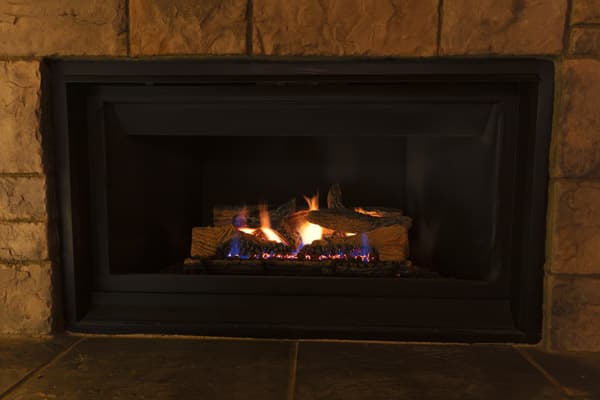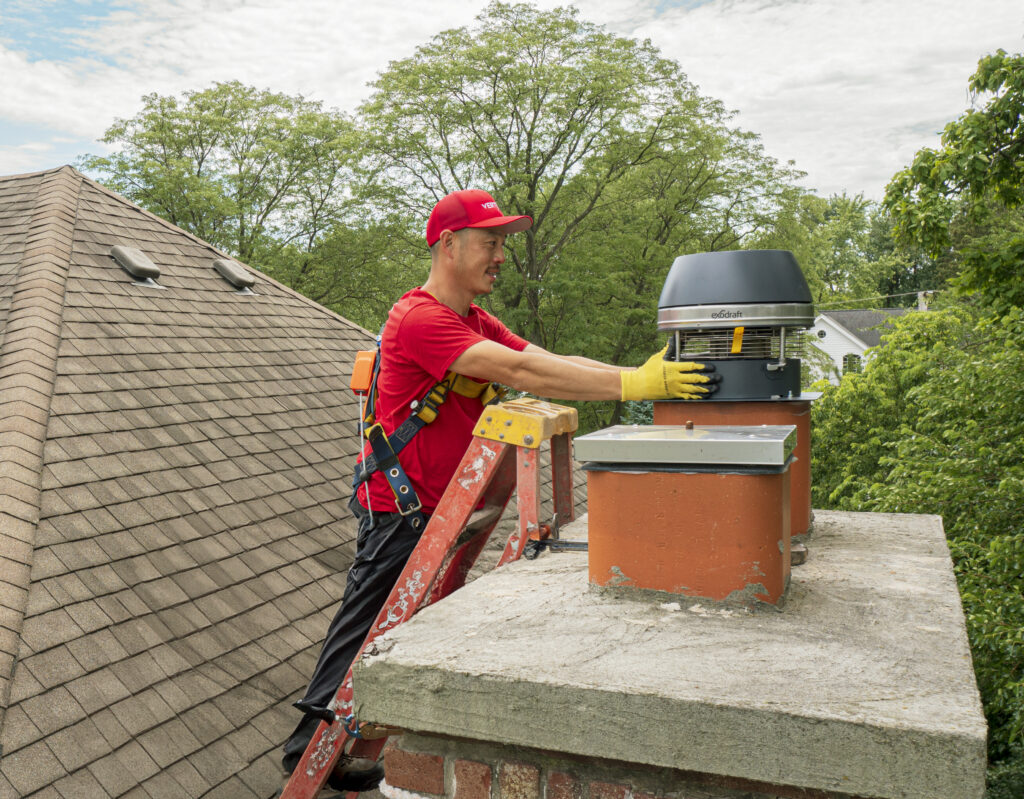
Nowadays, gas fireplaces are preferred by the majority of households over classic wood fireplaces. This is because gas fireplaces have a reduced effect on indoor air quality and are safer and more energy-efficient. However, it can be very disappointing when the gas fireplace doesn't stay lighted due to component wear and tear or poor upkeep.
The ignition assembly is one component that frequently causes gas fireplace issues. The pilot light assembly, pilot tubing, thermocouple, and thermopile are the four parts of the ignition system most likely to have problems when a fireplace doesn't stay lit.
Remember that hiring a professional is usually preferable if you need more knowledge before starting a DIY endeavor to mend your gas fireplace. You'll be working with a combustion appliance, and the repercussions of a mistaken repair could be fatal. A poorly done gas fireplace repair can have several negative effects, including gas leaks, explosions, fire, and carbon monoxide poisoning.
Only move forward if you're certain, or call a fireplace expert instead. They have experience, training, and certification.
Let's examine the causes of your fireplace's failure to remain lit now, followed by possible solutions.

Issues with Pilot Light and Fix
A gas fireplace may occasionally experience a problem with the pilot light going out. The little blue flame that appears when a key is turned or a switch is called the pilot light. This flame aids in starting your fire, saving you from wasting a ton of kindling trying to set the logs ablaze and get it going.
The pilot light's flame should be blue with a slight yellow hue. This is because the sensors surrounding the flame should be in contact with it. The thermocouple and thermopile are these sensors. Flames that are completely yellow or red are signs of the gas being polluted.
You might only need to swap out the fireplace thermocouple to fix the pilot light. However, it's possible that this component needs to be fixed or worn out from repeated use. If the thermocouple is not the source of the issue, then a thermopile is most likely to blame.
Check that the gas is on and supplied before you start replacing components. Attempt to reset your pilot light. Check the relevant components if the gas fireplace still won't stay lit.
Issues with Thermopile and Thermocouple
Knowing the distinction between these two fireplace components can result in a faster, easier resolution for your gas concern.
The thermocouple is a detector that gauges gas flow and fills the pilot light's valve with gas. When the fireplace is turned on, the thermopile opens this gas valve. While both components aid in converting heat into energy and delivering gas to the fireplace, the thermopile produces more electrical current, in contrast.
Check your thermopile first. A multimeter can test the thermopile, which analyses the TH/TP contacts to calculate the power generated. Ensure the pilot light has been turned on for at least two or more minutes before turning it off.

The thermocouple can be another factor in your gas fireplace's failure to maintain a flame. Turn your focus to the thermocouple if you tested the thermopile and it passed with a reading of 300 millivolts or above. The thermocouple can also be tested using a multimeter. At least 25 millivolts should be displayed. It must be replaced if the voltage is less than 25 millivolts.
Additionally, you should check your burner ports, which might develop clogs and dirt. The flame may be uneven and ignite if the burner ports are clean. You can fix your fireplace issue by cleaning them.
Turning off the gas will allow you to clean your thermopile and thermocouple swiftly. Then, you can remove as much of the accumulated soot as you can with the aid of a stainless steel brush and fine-grit sandpaper.
When the pilot light still won't stay lit after cleaning, it's usually time to buy new equipment. First, remove the broken thermocouple and thermopile and install new ones.
How to Relight a Pilot Light
There are instances when a homeowner might decide to switch off the pilot light in addition to when it is necessary to do so when it unexpectedly goes out. These factors make learning how to relight the pilot light crucial. The procedure is straightforward, and the directions are typically displayed on the furnace in a visible place.
Always examine the manufacturer's instructions and adhere to them precisely if you want to stay safe.
Regardless of the brand and type of your equipment, the following fundamental instructions always apply:
- At the power switch or thermostat, switch off your appliance.
- To select "pilot," locate and turn the gas valve control knob.
- Never use force or oil on sticky pilot light controls. Damage from this may result in gas leaks.
- While holding a match to the pilot burner, press the red button. To reach the end of the little pilot tubing, you need to grip it using needle nose pliers or a long match. These could be concealed by a thin panel or metal door.
- Hold the red button down after starting the pilot light for an additional 60 seconds. It is successful if you let off the button and the flame stays ignited.
- You require the assistance of a trained service expert if the light goes off.
- Put the "on" position back on the gas valve knob.
- Return any doors or panels that were shifted to gain access to the appliance's interior.
Other Causes of Gas Fireplace Failure to Remain Lit
If the preceding procedures don't resolve your problem, you should call a technician. A simple DIY cure for a malfunctioning gas fireplace is to check the thermopile or pilot light for failure. Other potential causes, besides a defective thermopile and thermocouple, include:
Improper Gas Service Pressure
Gas fireplaces will only stay lighted if your gas pressure is set correctly. You might hire a technician to assist you in making the required modifications.
Defective Gas Valve
Although it is not a typical problem with gas fireplaces, it is prone to failure like any other part. If this occurs, you should immediately contact a professional to get it changed to prevent a fire incident.
Moisture in the Drip Loop
A drip loop failure could be brought on by moisture in the gas line. Your fireplace may not stay lighted for this reason. You should consult a specialist to determine whether the issue is moisture diluting the natural gas.
Clogged Burner Ports
The flame is often uneven and may even go out when your burner ports are blocked. The issue might be resolved by occasionally cleaning filthy burner ports.
Time For Gas Fireplace Maintenance and Cleaning
Whether the solution was successful or not, routine gas fireplace maintenance will prevent future stress and ensure that your fireplace continues to operate.
When the fireplace is tidy and has received the necessary maintenance, it burns consistently and keeps dirt from damaging its workings. You may restore the sparkle to your gas fireplace using a hand brush, rag, and vacuum.
Maintaining your gas fireplace might help you avoid problems like trouble keeping the appliance lit.
The lifespan of your fireplace can be increased by keeping it clean and maintained. However frequently it has been used, the parts have likely worn down from repeated use, which may be the cause of the fireplace's inability to maintain a flame.
Reviewing the procedures mentioned above lets you quickly relight the pilot light in your fireplace. To avoid fire risks, however, always seek professional advice if you need to replace parts or examine any serious problems with your fireplace.
Vertical has been in the chimney care business for over 35 years, and we have devoted our time and energy to bring safety to your home. We have spent all 35 years making sure we give our customers the best possible service. Take your chimney to a higher standard with Vertical and contact us today to get a free quote!
